|
Balanced or Unbalanced? |
Marcy Petrini
August, 2025
These terms can be confusing since they sound almost as if they could describe the same fabric. Also, they have been used under different circumstances.
I use balanced to describe a fabric where there is the same amount of warp and weft on both sides of the cloth. The motifs may be different, but it’s the amount of yarn that is balanced. In contrast, an unbalanced fabric is weft-dominant on one side and warp-dominant on the other.
Below is a photo of a balanced fabric, huck lace.
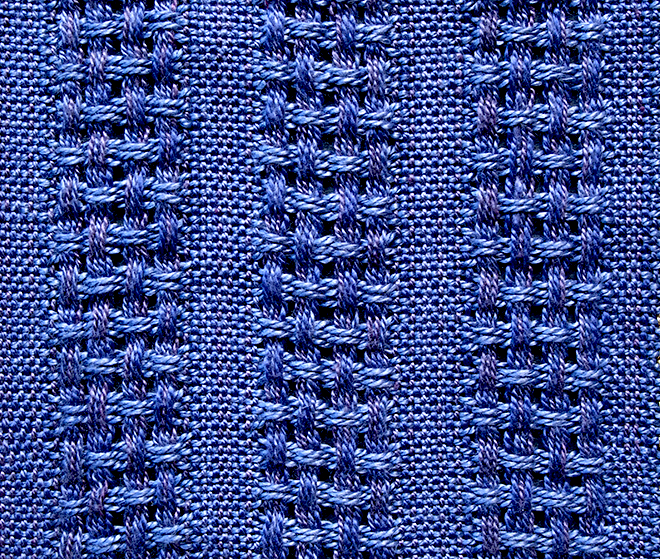
The lace portions have equal amounts of warp and weft floats on both sides of this shawl, and the plain weave stripes also have the same amount of warp and weft on each side. In contrast, the fabric below is unbalanced. The first photo shows one side, followed by a photo of the other side.
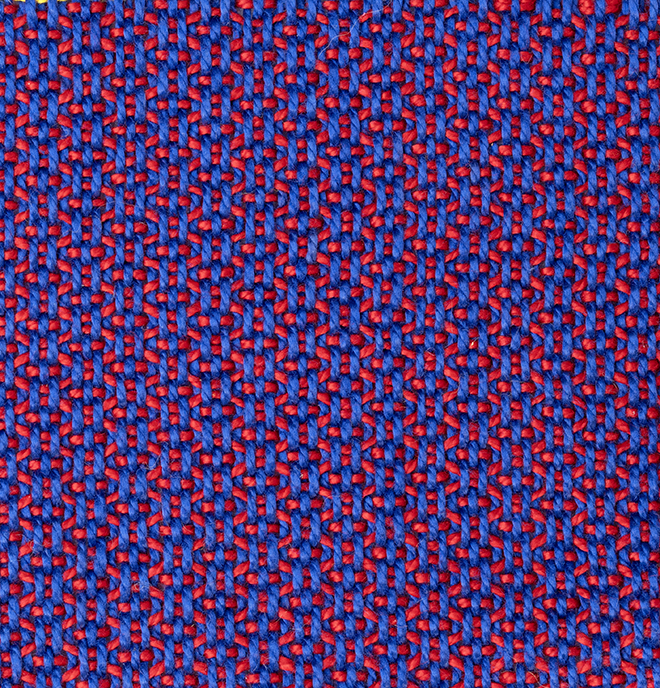
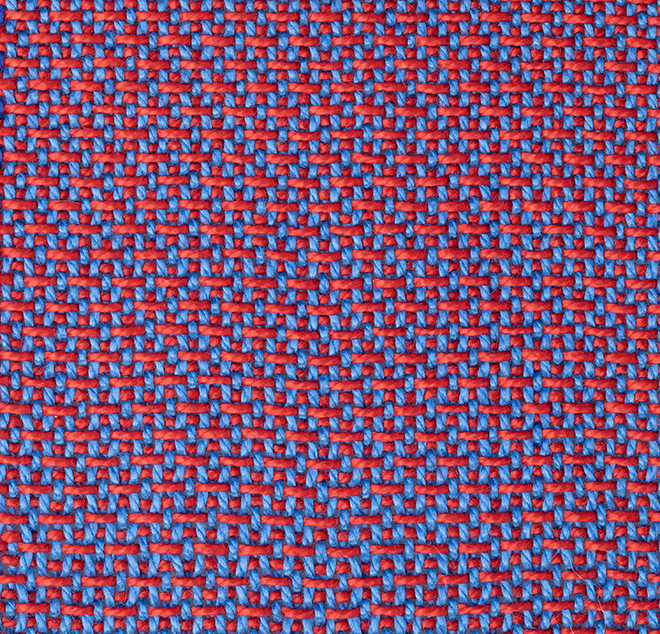
The fabric is a sample of a three-shaft twill. By necessity, structures with an uneven number of shafts produce unbalanced fabrics; satins on five shafts is another example. However, we can have an unbalanced structure with an even number of shafts. A 3/1 broken twill, also called a false satin, uses four shafts and produces an unbalanced fabric as shown below.
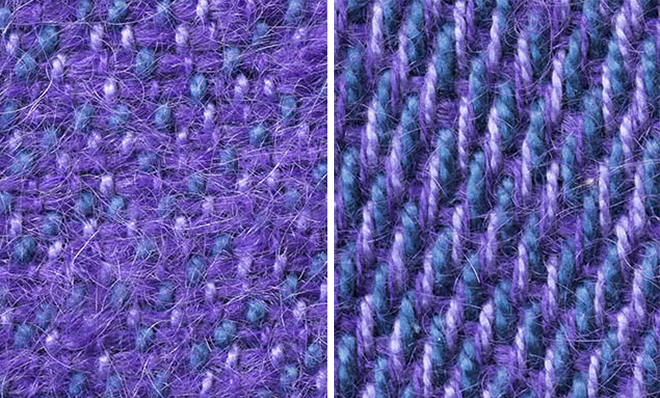
The terms regular and irregular generally refer to twills. A regular twill is one that can be described by a ratio which tells us the number of warps ends that are raised and the number that are lowered (or vice versa) with every pick. If there isn’t a single ratio to describe the treadling of the motif repeat, the twill is irregular.
This is clearer using drawdowns. Below is the quintessential regular twill, a 2/2 straight will. For every pick, 2 threads are up and two are down to be covered by weft.
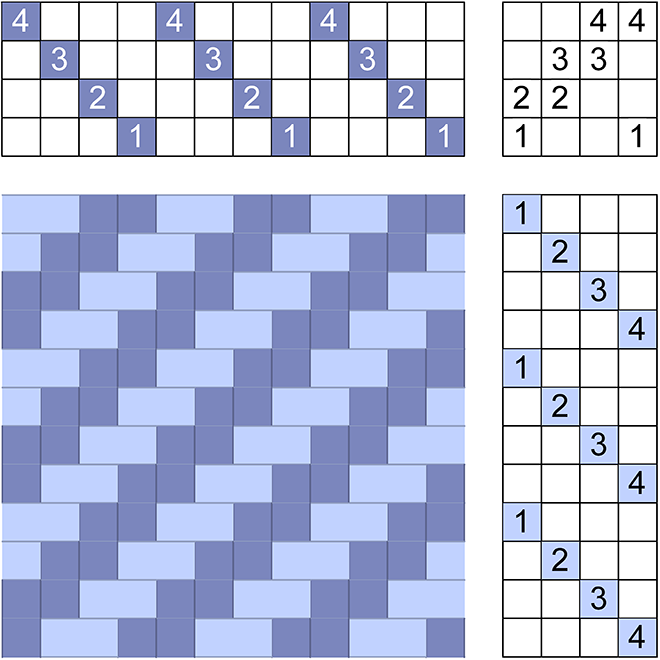
The drawdown below is described by Davison as a basket weave variation (although it is a twill and not a basket weave structure). A pick may raise one, two or three shafts. There is no way to describe the ratio as it changes with every pick of the six-thread treadling steps.
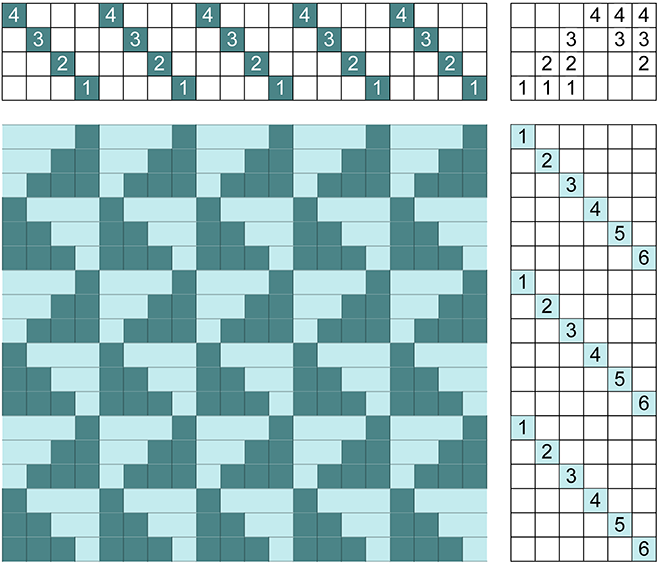
Both this straight twill and the basket weave variation are balanced fabrics. Even though with every pick the basket weave variation seems to be unbalanced, it is the overall fabric that is balanced, it has the same amount of warp and weft on each side of the fabric.
However, both regular and irregular twills can be unbalanced.
The drawdown below is a 4/2/1/1 twill; this means that with every pick, five threads (4+1) are up and 3 (2+1) are down, thus producing an unbalanced fabric. The twill is regular, but the fabric is unbalanced.
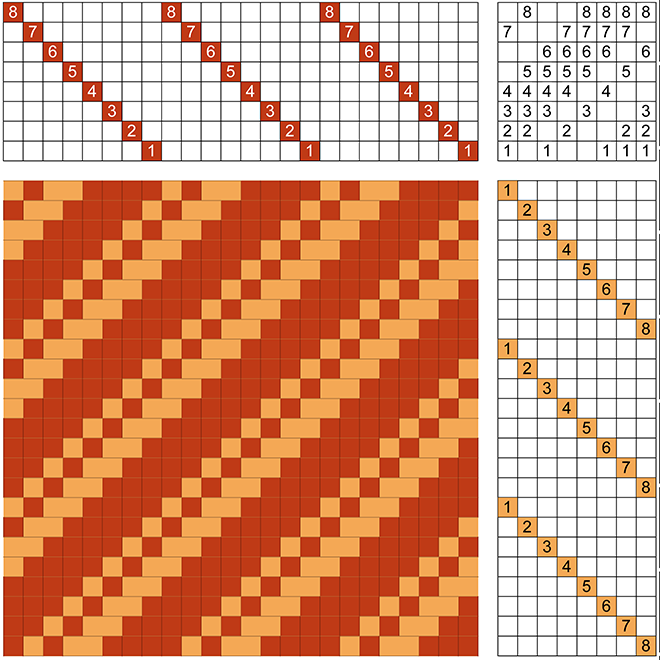
The undulating twill below is irregular because there is no single ratio that describes all eight treadling steps. This will produce an unbalanced cloth as we can see from the drawdown: on this side of the fabric there is more weft than warp, the other side will be the opposite.
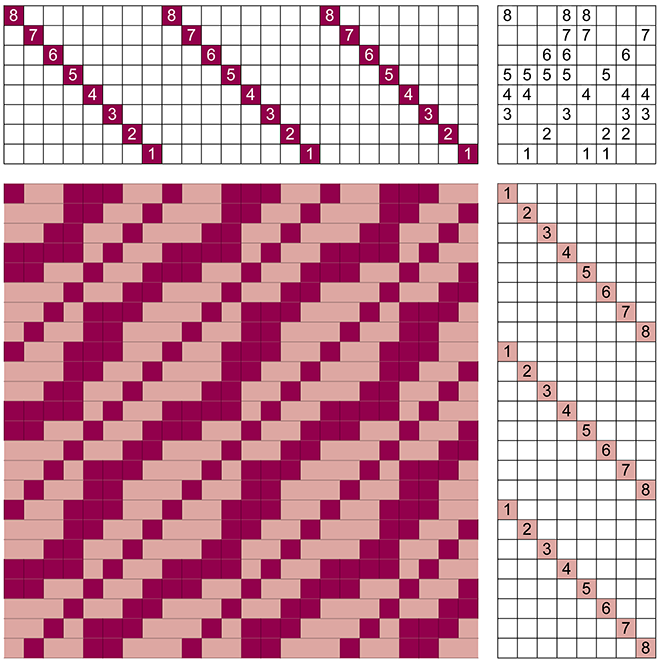
Why does it matter if a fabric is balanced or unbalanced? Unbalanced fabrics tend to pack more weft, so they can be heavier and less drapeable. By adjusting the thread size, we can avoid it, but we have to plan ahead.
Whether a twill is regular or irregular only matters in the describing it. If I wrote about the regular unbalanced twill above, all I would have to say is that the twill is a 4/2/1/1 woven on a straight draw. To describe the undulating twill we just saw, however, the entire drawdown is necessary.
Happy Weaving!
Marcy
